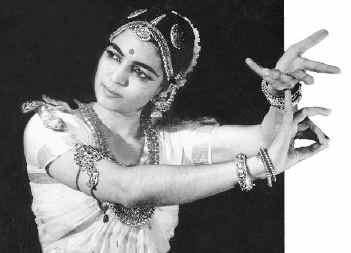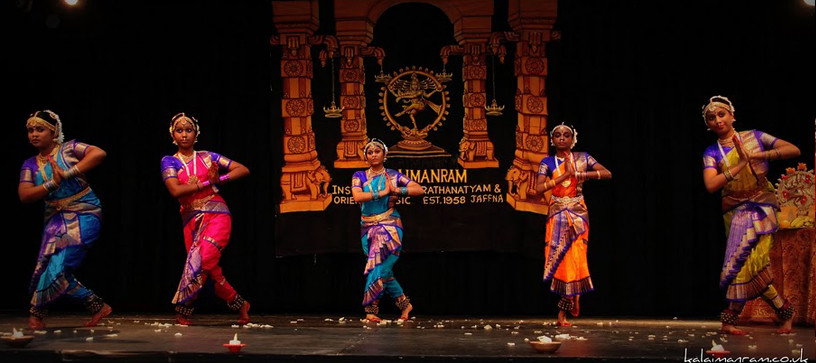To this day, there is no Bharatanatyam style that is distinct to Sri Lanka.
by Teevin Kulanthai, September 3, 2018
https://entamilculturalconsciousness.wordpress.com
Dance is the aesthetic representation of culture through movement. As one of the earliest forms of storytelling, the enduring art form embodies and immortalizes the history and traditions of its creators.
Apart from Koothu, which is more of a form of drama than a form of dance, no Tamil dance form has been developed in Sri Lanka. Instead, Bharatanatyam has been adopted from the Indians and disseminated amongst the Tamils in Sri Lanka as a representation of our culture and identity.
Bharatanatyam is an Indian classical dance that originated in Tamil Nadu and can trace its foundations to the ancient text, the Natya Shastra. Its existence throughout history is highlighted in ancient Tamil epics such as Silappatikaram and Manimegalai to name a few. The performance repertoire of Bharatanatyam, like other Indian classical dances, includes pure dance (nrita), solo expressive dance (nritya) and group dramatic dance (natya).
Sadir, as Bharatanatyam was formerly known, was developed and practiced by the temple dancers, or Devadasis, across Tamil Nadu. After traditionally enjoying high status in society, their fortunes took a turn for the worse with the advent of Colonial rule as the British condemned and vilified their dance.

Rukmini Devi Arundale
The art form was resurrected by Krishna Iyer and Rukmini Devi Arundale, amongst others, who strove to keep the dying art form alive and proliferated it beyond the social divides of class and caste, making it one of the most recognizable classical dance forms of India. Apart from rechristening Sadir to Bharatanatyam, Arundale made extensive changes to modernize the dance form by embellishing the existing repertoire and incorporating creative elements to the overall stage performance. Additionally, she also revamped the visual appearance of the dancer with aspects such as the costume and jewellery now becoming synonymous with the dance form. Arundale was the monumental force behind transforming the once frowned upon dance form into the cultural symbol it has now become.
On the other hand, Bharatanatyam’s metamorphosis in Sri Lanka is yet to occur. While it is challenging to find irrefutable evidence denoting the arrival of Bharatanatyam in Sri Lanka, it is widely accepted that the dance form was introduced to the island with the arrival of Devadasis from India. It appears that the art form did not evolve beyond the temples with the Devadasis being largely looked down upon as was the dance form that they performed. As such, their dance did not become popular in the island and did not give rise to an offshoot that is peculiar to the island.
While Sadir evolved into Bharatanatyam in India, a similar occurrence did not arise in Sri Lanka with the art form gaining popularity in the island only after its reemergence in India.
Curiously, while Bharatanatyam was embraced and adopted by the Sr Lankan Tamils, it was not developed or truly made our own. While there are various Baanis or styles of dance in India such as the Kalakshetra, Vazhuvoor, Pandanallur style, no such prominent baani came to be in Sri Lanka. To this day, there is no Bharatanatyam style that is distinct to Sri Lanka. This is despite the fact that there are multiple institutions peppered across the country, including the Ramanathan Academy of Fine Arts, that are dedicated to the development and perpetuation of the dance form. While Indian creators such as Dr. Padma Subrahmanyam, Chitra Visweswaran and Savitha Sastry continue to contribute to the dance form through extensive research, additions to the repertoire and contemporary interpretations of the ancient art form, no significant contributions to the dance form can be attributed to the Sri Lankan Tamils.
As Bharatanatyam did not originate in Sri Lanka and has not undergone an evolution of any kind in Sri Lanka, it is and will always remain an Indian Classical dance form regardless of the fact that it is practiced by thousands of Sri Lankan Tamils across the world. To put it bluntly, we are using an Indian art form as a representation of our culture and identity.
While the Sinhalese have Sabaragamuwa, low country and other Kandyan dance forms and the Tamils of India have Bharatanatyam, what do the Sri Lankan Tamils have? Or rather, what have we created? The dance that we use as a depiction of our culture will never truly be our own. The establishment of a Cultural Centre in Jaffna by India to promote Bharatanatyam and other Indian art forms in an effort to help Tamil people “connect with their roots” perfectly emphasizes their underlying sentiments regarding the art forms they consider their own.
 Myths, legends and folklore encompass the culture of their narrators and are further immortalized by the arts. Why are we perpetuating Indian epics such as the Ramayanam and Mahabharatam when we have our own stories to tell? Legends around Nainathivu, Nallur Kandaswamy and the Pancha Ishwarams are just some of the many stories that are unique to the Sri Lankan Tamils. In fact, in 1999, students from Kalakshetra produced and performed a dance drama entitled ‘Pancha Ishwarams of Lanka’ as part of a concert in the UK with the audience largely being Sri Lankan Tamils. When others are keen to tell our own stories to us, why are we so reluctant to do so ourselves?
Myths, legends and folklore encompass the culture of their narrators and are further immortalized by the arts. Why are we perpetuating Indian epics such as the Ramayanam and Mahabharatam when we have our own stories to tell? Legends around Nainathivu, Nallur Kandaswamy and the Pancha Ishwarams are just some of the many stories that are unique to the Sri Lankan Tamils. In fact, in 1999, students from Kalakshetra produced and performed a dance drama entitled ‘Pancha Ishwarams of Lanka’ as part of a concert in the UK with the audience largely being Sri Lankan Tamils. When others are keen to tell our own stories to us, why are we so reluctant to do so ourselves?
The only way forward is to develop a new dance form that is truly unique to the Tamils of Sri Lanka. The creation of a new dance form will be a step in the direction towards capturing and nurturing our history whilst embracing and developing our identity for generations to come.
Thank you for sharing. So well written blog and good information… slightly opinionated but great to read. Will keep it bookmarked.
This article is laughable. it shows the bizarre confused identity that certain Eelam Tamils have, of being both distinct to TN, but also of being ‘Tamils’.
The fact is our culture is largely from South India, and most importantly our language which is our primary ethnic identifier originates in Tamil Nadu not Eelam. So yes it is Indian Tamil culture which is our most proud association.